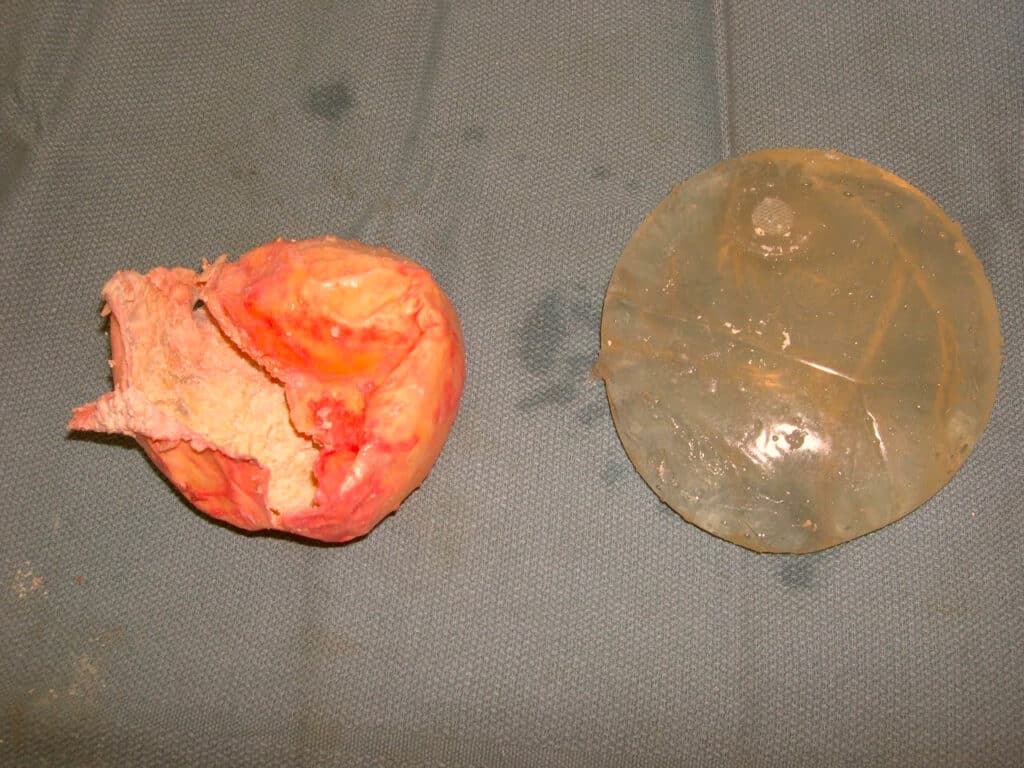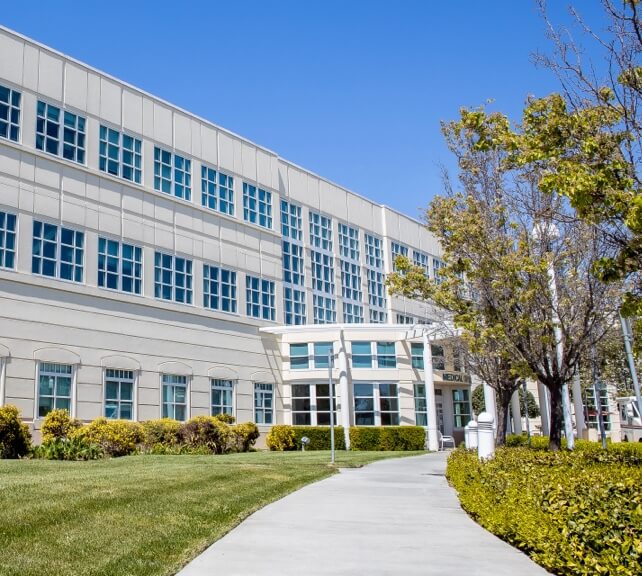Do You Have Capsular Contracture?

Capsular contracture is a breast implant-related complication that involves tight, uncomfortable scar tissue that forms around a breast implant, constricting and distorting the shape and feel of the breast. This blog explains what capsular contracture is, symptoms to look for, how the condition can be confirmed, and what to do if you think you may be experiencing this breast augmentation complication.
6 Min Read:
What Is Capsular Contracture?
One of the most frustrating things about any life situation is the first inkling that something has gone wrong. Normally, after a breast augmentation, the body naturally forms a soft layer of scar tissue, known as a capsule, around any foreign object, including breast implants, as part of the healing process. This capsule is usually thin and pliable, helping to hold the implant in place without causing any noticeable changes. However, in cases of capsular contracture, this capsule thickens and tightens excessively, squeezing the implant.
The cause of capsular contracture is not completely understood, but several factors may be behind this condition. These include bacterial contamination, hematoma (a collection of blood), and inflammation around the implant. The severity of capsular contracture is often classified using the Baker grading system, which ranges from Grade I (breast is soft and appears normal) to Grade IV (breast is hard, painful, and appears abnormal).
What Are the Symptoms of Capsular Contracture?
Early recognition of capsular contracture symptoms can help breast augmentation patients and their doctors manage the condition more effectively. Symptoms typically develop gradually and can vary in intensity. Here are some common signs to watch for:
Firmness and Hardness
One of the primary symptoms of capsular contracture is an increasing firmness or hardness of the breast due to the thickening and tightening of the natural scar tissue that forms a capsule around the implant. The breast may feel distinctly different from the other breast or from its previous state.
Distortion in Shape
Capsular contracture can cause visible changes in the shape of the breast. The breast may appear more rounded, misshapen, or unnaturally high on the chest. The implant might look as if it is being squeezed, leading to an uneven or distorted appearance.
Discomfort
As the scar tissue tightens, it can cause mild discomfort to severe pain that often worsens with activities that involve the chest muscles, such as lifting or exercising.
Changes in Breast Implant Position
The tightening capsule can also cause the implant to shift position. It may move higher on the chest or become displaced to one side, further contributing to an asymmetrical appearance.
If you are experiencing signs or symptoms indicative of capsular contracture, call your surgeon immediately to schedule an exam. A CT or MRI scan may be necessary to accurately diagnose capsular contracture.
What Is the Treatment for Capsular Contracture?
Options to treat capsular contracture vary depending on the severity and the specific circumstances of each patient.
Non-Surgical Treatments
In some cases, non-surgical treatments might be recommended. These can include:
- Medications: Anti-inflammatory medications or drugs like leukotriene inhibitors can help reduce inflammation and soften the capsule in mild cases of capsular contracture.
- Massage and Physical Therapy: Gentle breast massages or physical therapy techniques might help in the early stages to maintain capsule flexibility and reduce tightness.
- Ultrasound Therapy: Therapeutic ultrasound or ‘Aspen therapy’ can sometimes help soften the scar tissue and improve symptoms.
Surgical Treatments
When non-surgical options are ineffective, surgery might be necessary. Surgical treatments include:
- Capsulectomy: This procedure involves the complete removal of the thickened capsule around the implant. The implant may be replaced or reinserted after the capsule is removed.
- Capsulotomy: In a capsulotomy, the surgeon makes incisions in the scar tissue to release the tightness and allow the implant to assume a more natural position. This can be done either open (through a surgical incision) or closed (using external manipulation).
- Implant Replacement: Sometimes, revision surgery, which involves removing the affected implant and replacing it with a new one, can help address the issue. Surgeons might use a different type of implant or placement technique to reduce the risk of recurrence.
What Increases the Risk of Capsular Contracture Recurrence?
While treatment can effectively address capsular contracture, there is always a risk of it returning. Studies show varying recurrence rates, but the risk is generally considered significant. Several factors can influence the likelihood of capsular contracture returning:
- Previous History: If you have experienced capsular contracture before, the chances of it happening again are higher.
- Type of Implant: The type of implant (silicone vs. saline) and its surface texture (smooth vs. textured) can impact the likelihood of recurrence. Some studies show that textured implants can lower the risk of capsular contracture.
- Placement of Implant: Implants placed under the muscle (submuscular) tend to have a lower risk of capsular contracture than those placed above the muscle (subglandular).
- Surgical Technique: The skill and technique used by the surgeon can also play a role in minimizing the risk of capsular contracture recurrence. Proper surgical techniques that reduce contamination and trauma to the tissue are crucial.
How Can You Minimize the Risk of Capsular Contracture?
While it is impossible to eliminate the risk of capsular contracture entirely, several strategies can help minimize the chances of developing this condition:
Choose an Experienced Plastic Surgeon
A reputable, board-certified plastic surgeon with a proven track record in performing breast augmentation procedures can significantly reduce the risk of complications, including capsular contracture. Experienced surgeons are more likely to use advanced techniques that minimize tissue trauma and contamination.
Follow Postoperative Care Instructions
Adhering to your surgeon’s postoperative care instructions is critical. This can include guidelines on massage techniques, activity restrictions, and the correct use of prescribed medications. Proper care and healing during recovery can help prevent complications.
Consider Implant Type and Placement
Discuss with your surgeon the best type and placement of implants for your situation. Textured implants are now rarely used with augmentation due to BIA-ALCL. This is a type of lymphoma that can develop around breast implants. Submuscular placement may reduce the risk of capsular contracture, but your surgeon will make individualized recommendations based on your anatomy and preferences.
Maintain a Healthy Lifestyle
Don’t smoke, eat a healthy, balanced diet, stay hydrated, and exercise regularly to promote healing, reduce inflammation, and lower the risk of capsular contracture.
Attend Regular Follow-Up Visits
Postoperative appointments with your surgeon allow for early detection and intervention if capsular contracture begins to develop. Early treatment can often keep capsular contracture from worsening and may reduce the need for more invasive procedures.
Want Excellent Breast Augmentation Results in San Francisco?
To reduce the risk of this complication and ensure the best possible outcomes, Dr. Delgado puts patient safety and satisfaction first when performing breast augmentation in San Francisco and Novato.
Schedule a consultation at one of our state-of-the-art locations by calling 415.989.2221 to reach our San Francisco office or 415.898.4161 for Novato. Our board-certified plastic surgeon offers a variety of cosmetic breast surgery options in Marin County, California.




